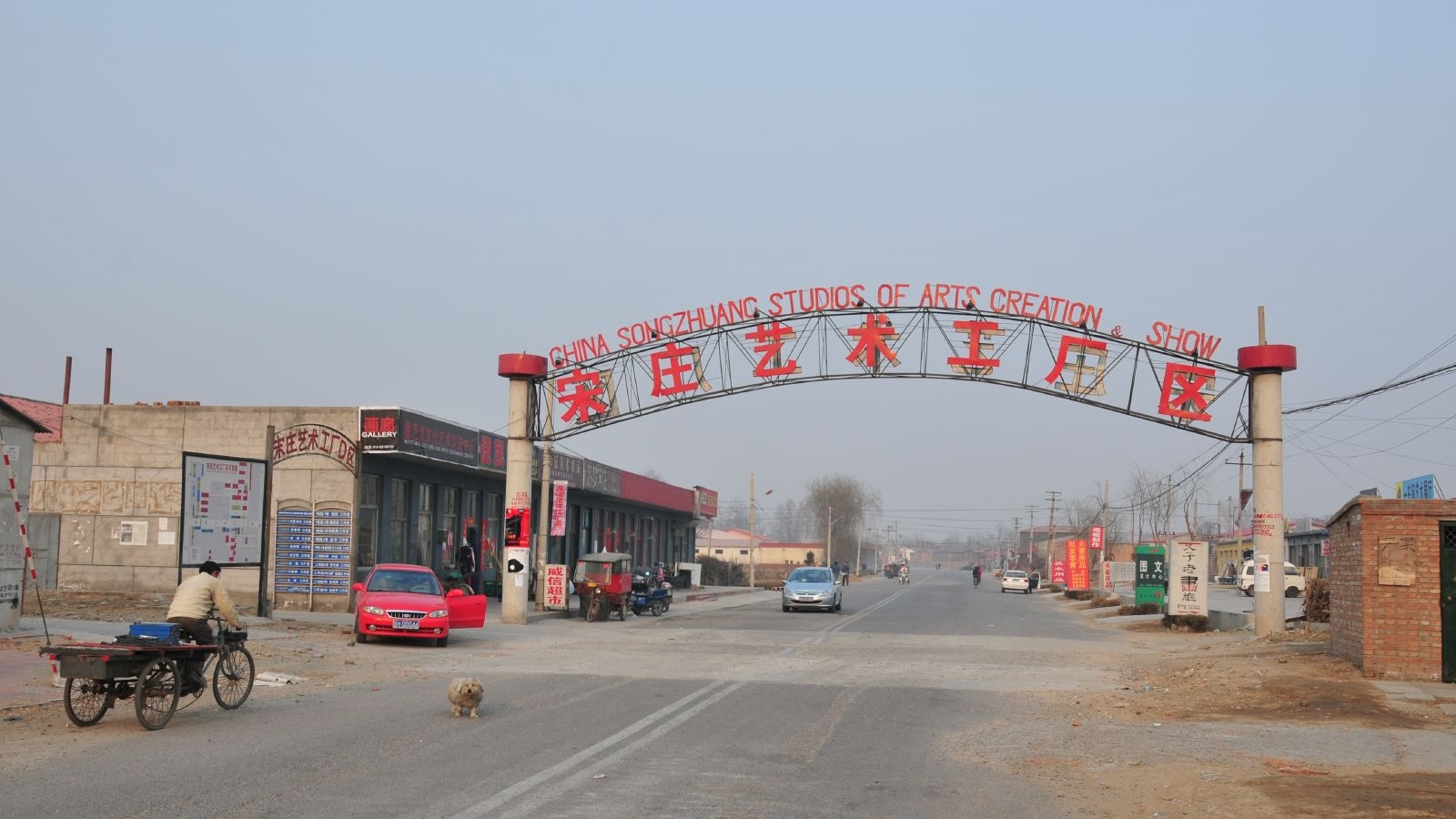By Westerly Gorayeb
On Aug. 23, 2014 at 1:28 p.m., Chinese art critic and curator of contemporary Chinese art Li Xianting posted a sobering message to his WeChat social media account. After days of back and forth negotiations with the police, he wrote, “Police and public safety officers have used cars, trash cans, bicycles, and all sorts of other things to block all roads leading to our Film Fund courtyard house. No one can get in.”
The 11th Beijing Independent Film Festival had officially been cancelled.
The Beijing Independent Film Festival (BIFF) is—or, perhaps, was—a burgeoning forum for Chinese independent film held annually in Songzhuang Village, an arts colony of sorts in the Beijing suburb of Tongzhou. Begun in 2006 as a project of Li Xianting’s namesake film foundation, the Li Xianting Film Fund, BIFF has blossomed into one of the most influential gathering points for independent filmmakers in China.
Independent Chinese films, like the ones shown at BIFF, present a narrative counter to that of mainstream Chinese media. The films push against the flashy, constructed image of a modernized China, and seek to expose lesser-known issues of contemporary Chinese life.
It is unsurprising, then, that the festival has faced government harassment nearly every year since its inception. But the 2014 cancellation marked a new level of government interference in the relatively isolated Songzhuang art scene.
Immediately following BIFF’s cancellation, leading members of 31 film festivals around the world co-signed the “Statement in Support of the Beijing Independent Film Festival and the Li Xianting Film Fund.” The statement was a symbolic display of solidarity designed to bring awareness to China’s strict censorship rules.
In the year since, BIFF has found new life in New York City. From August 7 to September 13, 2015, BIFF will be reborn in six venues around the city as “Cinema on the Edge: The Best of the Beijing Independent Film Festival 2012-2014.”
“Cinema on the Edge” hopes to build upon symbolic displays of solidarity. In an interview with The New York Times, “Cinema on the Edge” organizer Shelley Kraicer said that the nature of BIFF’s cancellation made him and his team “want to go beyond expressions of solidarity” and reintroduce the films to an impassioned live audience.
“Cinema on the Edge” is a thoughtful, well-intentioned gesture extended to the repressed Beijing independent film scene. It seeks to point a critical eye towards China and pressure the government to relax its control over independent art.
But the message may be lost on Beijing. Despite well-documented violations of human rights and freedoms of expression, China continues to dodge direct sanctions on the world stage, as last week’s awarding of the 2022 Winter Olympics to Beijing confirmed. “Cinema on the Edge,” with its soft intimidation tactics, may be fighting a losing battle.
This isn’t the only problem “Cinema on the Edge” faces in its mission to support BIFF.
While the BIFF that was supposed to take place in Songzhuang was a symbol of artistic defiance, that’s not all it stood for. The films that were supposed to be screened were not just politically oriented—Xu Tong’s “Wa yanjing” (“Cut out the Eyes”) wrestles with the clash between rural and urban life experiences; Yang Pingdao’s “Shengming de heliu” (“The River of Life”) is a moving autobiographical story; Zhi Jun’s “Chai tiesi” (“Dismantling Clematis #16”) offers an experimental take on environmental destruction.
But in its new, New York-based form, BIFF becomes a token of the repressed Beijing art scene, and its films’ nuanced, apolitical messages may be lost on the foreign audience.
Shu-Chin Tsui, professor of Asian Studies and Cinema Studies at Bowdoin College, says the New York festival’s focus on bringing light to Chinese censorship may drown out the distinctly Chinese experiences captured in the films. “It is significant to have censored films screened in the U.S.,” she said. “But perception of Chinese issues will be different because of different audiences and locations. For Americans, the documentary exposure of Chinese issues reveals experiences of ‘other,’ and for Chinese, [the] reality surrounding themselves.”
In light of the transformative power of the foreign gaze, it is important that controversial film festivals and art shows like BIFF reach a Chinese audience. Given China’s strict censorship laws, reaching a Chinese audience may require these shows to work within the censored space provided by the Chinese government.
Some artists seem to have accomplished this. In the fall of 2014, Cai Guoqiang opened his solo exhibition, “The Ninth Wave,” at the Power Station of Art in Shanghai. The show, a large-scale retrospective featuring Cai’s signature gunpowder drawings, a new-age Noah’s Arc, and hours of video, examined the effects of long-term environmental exploitation. Cai’s show prompted discussion, but it was not, as New Yorker columnist Orville Schell notes, a “didactic tool.” “The Ninth Wave” is a balancing act between artistic truth, meaningful conversation, and government approval.
In the long run, creating cautious shows like Cai’s may be better than removing these kinds of conversations from the Chinese context entirely, but it might not be the right choice for all artists. Professor Tsui points out there is no uniform way to navigate censorship. “For each individual, one may handle the issue differently,” she said.
Make no mistake: censorship remains a massive roadblock to discussion and innovation in independent Chinese art. Professor Tsui warned of the very real dangers artists face when they push boundaries in China. “Please protect the individuals as you [select] materials for your writing,” she said. “Censorship in China is severe.”
It remains to be seen what this severe censorship will mean for the future of the Beijing Independent Film Festival.
*****
*****
Westerly Gorayeb is an editorial assistant at World Policy Journal.
[Photo by drnan tu]
